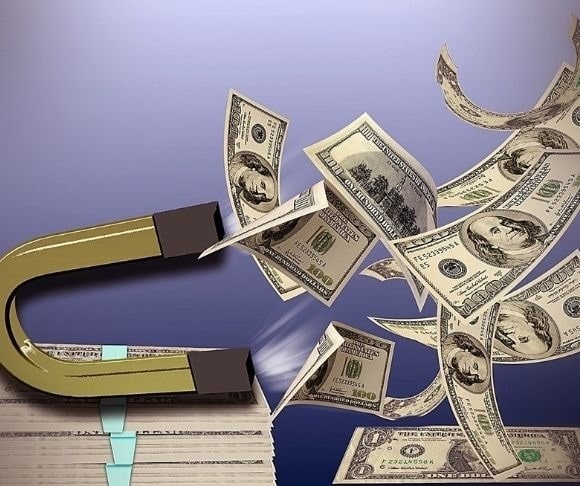The U.S. government is about to approve one of the largest stimulus packages in the country’s history. After months of terse talks and on-again, off-again negotiations, Republican and Democratic leaders in Congress have finally reached a nearly $1 trillion coronavirus spending plan that will keep the doors of Washington open and extend a financial lifeline to struggling Americans and businesses during the COVID-19 public health crisis. But will a few hundred dollars from six-figure-earning politicians be enough to keep households, mom-and-pop shops, and the broader economy afloat throughout the state-created chaos?
The $908 Billion Package
 So, what is inside the $908 billion stimulus and relief package? The finer details are scarce since representatives and senators have yet to even read a word of legislation. But Senate Majority Leader Mitch McConnell (R-KY) and Senate Minority Leader Chuck Schumer (D-NY) have released some of the key provisions contained inside the COVID-19 bill.
So, what is inside the $908 billion stimulus and relief package? The finer details are scarce since representatives and senators have yet to even read a word of legislation. But Senate Majority Leader Mitch McConnell (R-KY) and Senate Minority Leader Chuck Schumer (D-NY) have released some of the key provisions contained inside the COVID-19 bill.
The two biggest features of the agreement are a second stimulus check of up to $600 for many Americans and an additional $300 in enhanced unemployment insurance (UI) benefits for 11 weeks.
Individual taxpayers earning $75,000 per year or less will see $600 checks in the mail without a cap. This is half of what most Americans got in the CARES Act nine months ago, and it could take several weeks before anyone sees this money.
Jobless Americans can receive extra compensation benefits through the Pandemic Unemployment Assistance (PUA) program and the long-term Pandemic Emergency Unemployment Compensation (PEUC) scheme until March 14. Moreover, the bill will offer another $100 per week for workers who “have both wage and self-employment income but whose base UI benefit calculation doesn’t take their self-employment into account.”
Small businesses will be given aid for the first time since the spring, with $248 billion allocated to another round of Paycheck Protection Program (PPP) loans. This time, $12 billion will be earmarked to minority-owned businesses and $15 billion will be transferred to independent movie theaters, cultural institutions, and live venues. Eligibility for the PPP was expanded to include non-profit organizations and local newspapers, television, and radio broadcasters.
GOP and Democratic leaders threw in $25 billion in rental relief. This money can be consumed for future and back payments, overdue utility bills, and future hydro costs. The bill also extends the nationwide eviction moratorium through January 31, 2021.
Two major sticking points for Republicans and Democrats were not included. The GOP demanded liability protections for businesses, while the Democrats proposed aid for state and local governments. A bipartisan team is currently drafting a separate bill for these two aspects.
Here are some other noteworthy additions:
- $30 billion into the “procurement and distribution” of the Pfizer-BioNTech and Moderna coronavirus vaccines.
- $82 billion for schools and colleges.
- $15 billion for airline payroll assistance.
- $13 billion in increased Supplemental Nutrition Assistance Program (SNAP) funding.
Washington Reacts
 Speaking on the Senate floor, Sen. McConnell assured Americans that “we have the bipartisan breakthrough the country has needed.” While House Speaker Nancy Pelosi (D-CA) and Sen. Schumer celebrated the “package that delivers urgently needed funds,” they still described it as inadequate and promised to push for more spending after January 20.
Speaking on the Senate floor, Sen. McConnell assured Americans that “we have the bipartisan breakthrough the country has needed.” While House Speaker Nancy Pelosi (D-CA) and Sen. Schumer celebrated the “package that delivers urgently needed funds,” they still described it as inadequate and promised to push for more spending after January 20.
Joe Biden called it a bill that “is just the beginning,” adding in a statement:
“Immediately, starting in the new year, Congress will need to get to work on support for our COVID-19 plan, for support to struggling families, and investments in jobs and economic recovery. There will be no time to waste.”
In other words, according to prominent Democrats, this $908 billion package is a down payment on another bill.
Meanwhile, House Majority Leader Steny H. Hoyer (D-MD) informed lawmakers that a vote on the as-yet-unreleased text would take place late Monday. It remains unclear as to when the bill would be finalized and published for legislators and the public to see. It is highly likely that it has the votes even without a thorough read, but not everyone is participating in a premature victory lap. Sen. Elizabeth Warren (D-MA) has not committed to voting for the legislation because “everyone still wants to see the final text.” Rep. Justin Amash (L-MI) tweeted in response to a news article that “we haven’t even seen the text.”
America’s Finances Get Wrecked
The U.S. government finished the last fiscal year with a $3.3 trillion federal deficit. Uncle Sam has already posted a record budget gap in the first two months of FY 2021. The Congressional Budget Office (CBO) is forecasting trillion-dollar deficits for the next decade, which would add to today’s national debt of $28 trillion. With more spending promised, inflation concerns could become more prominent, evident by the movement in gold, silver, and bitcoin prices. In theory, the era of COVID-19 spending will have to be paid for somehow, but Washington is notorious for perpetually kicking the can down the road. This is not the fault of the American people, but an irresponsible government. And yet, it is the American people who will bear the brunt of this fiscal catastrophe.
~
Read more from Andrew Moran.




